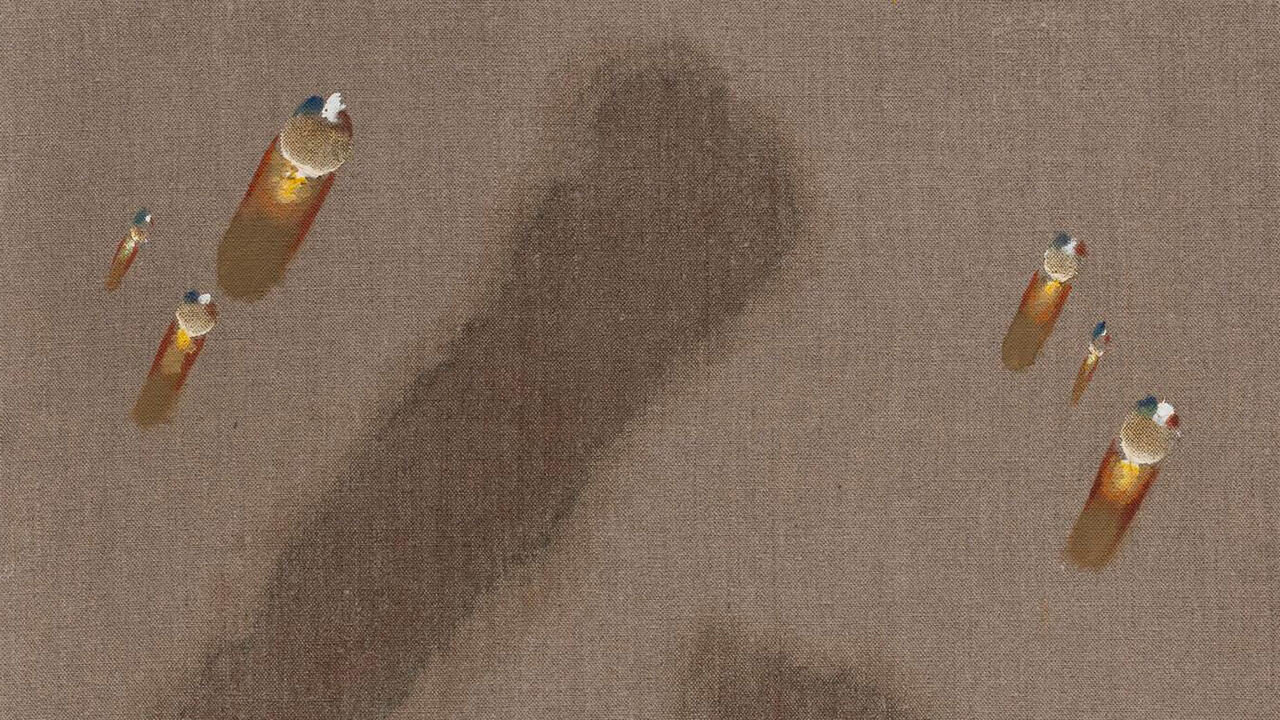Santiago Sierra

For an artist whose controversial works include displays of mass sodomy and the perceived humiliation, degradation and objectification of paid participants, Santiago Sierra’s exhibition at Void was relatively tame. Instead of the dubious practice of what Claire Bishop has tagged ‘delegated performance’ – the use of often untrained performers to carry out banal, sometimes exploitative activities in place of the artists themselves – ‘Veterans & Psychoponies’ used video and audio to tap into a macabre aesthetic redolent of a certain type of contemporary horror movie and psychodrama. Specifically, there was an affinity of tone and technique between Sierra’s work, Blair Witch Project (1999) and Michael Haneke’s Hidden (2005): films in which lo-fi technologies cause or are used to record intense emotional and physical discomfort.
In part, this must have been a methodology adopted for pragmatic reasons. Sierra was commissioned by Void, a medium-sized publicly funded gallery, to make new work, and so it’s reasonable to assume budget and time constraints prevented the hiring of people for the exhibition’s duration. There is also the issue of political dilettantism. Too often, artists are flown into locations and asked to reflect on socio-political conditions of which they have little personal experience. Sierra dodged this pitfall by focusing on the actions of British army veterans who had served in Northern Ireland. What remained, then, was an exhibition as ghost story: a gothic, gloomy and rather inconsequential reflection on the traces left by a malevolent, occupying force.
The centrepiece was a two-part iteration of ‘Veterans’ (all works 2013), an ongoing project involving military vets made to stand in gallery corners and face the wall. The gallery incarnation was a 15-minute black and white video filmed in dilapidated army barracks with a remote-controlled drone camera. Five former soldiers assumed the position at locations across the gutted building and were sought out by the roving drone-cam – action that directly recalled Blair Witch’s claustrophobic finale. Offsite, posters printed with the vet-in-the-corner image were pasted up around the city. Sierra isn’t known for the subtlety of his propositions and the message of both works was broadcast loud and clear: soldiers, as corporeal units through which the wills of nation-states, governments and dictators are expressed, are, by definition, deindividuated, psychically empty vessels, pre-programmed to carry out actions they have not authored. Drones, basically.
As such, they are non-persons, bodies without selves. Sierra’s heavy-handed literalism – the faceless soldier now formally denied a face – draws attention to this aspect of a servicewoman or man’s reality. But is it enough? In many ways, Veterans is a prime example of the fate of art that sacrifices formal and conceptual complexity for political directness. The work can feel an entirely pointless exercise when subordinated to a political message that has impact as a slogan – i.e. ‘soldiers are not people’ – but becomes conceptually unsophisticated as an art object.
Psychophonies plotted a more spectral route to the inhumanity of soldiery. Three field recordings were taken at Piggery Ridge, Ballykelly and Fort George, all sites in Derry~Londonderry where British forces allegedly used torture or ‘deep interrogation techniques’ on Irish paramilitaries and civilians. Through headphones, this was about close listening. The audience became sonic voyeurs, attentive to possible aural residues of atrocity, to phantom sounds. There is a long history of this sort of thing stretching at least as far back as the noisy, empty room recordings of German parapsychologist Konstantin Raudive. No spooky voices emerged from the ambient mix (traffic, wind, water, birds) in Psychophonies, but there were some architecturally revealing spatial dynamics. Still, listening to almost 25 minutes (the duration of each piece) of any environment would uncover the same thing. Here it wasn’t enough to move these recordings beyond remiss variations on a morbid theme.
This exhibition was a missed opportunity. Overall, Sierra the participatory puppet master, appropriating the logic of late capitalism to aestheticize subjection, lost much of his work’s impact without actual bodies to manipulate. In this respect, the exhibition at Void is critically important and worthy of attention. It showed that the limits of Sierra’s work, and perhaps delegated performance as a practice, are reached when dealing with complex socio-political issues. For me, the real story with army vets is surely cognitive dissonance: what must the psychic life of individuals like soldier 027, the only serviceman to decry inhumane actions of a company instructed to ‘get some kills’ at Bloody Sunday, be like? In the end, this question remained unanswered by figures in corners wearing fatigues.
















